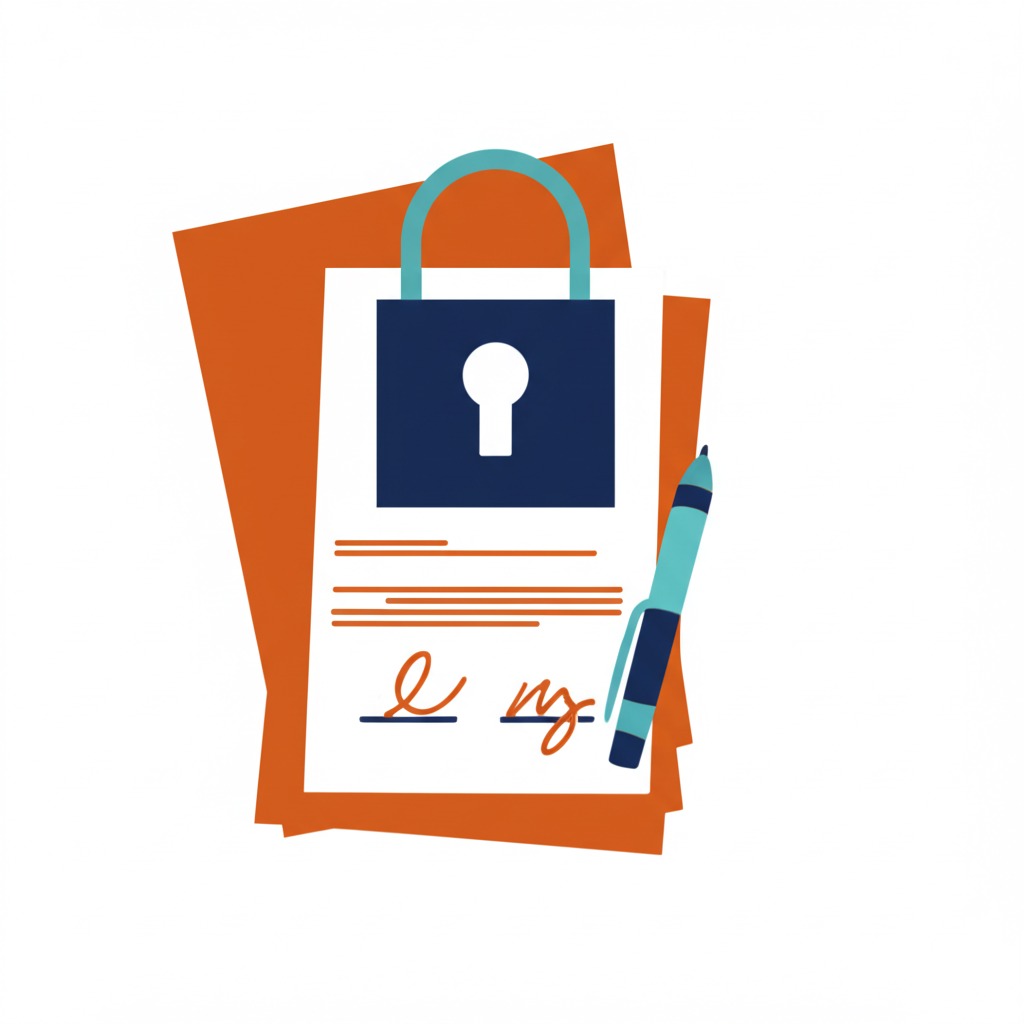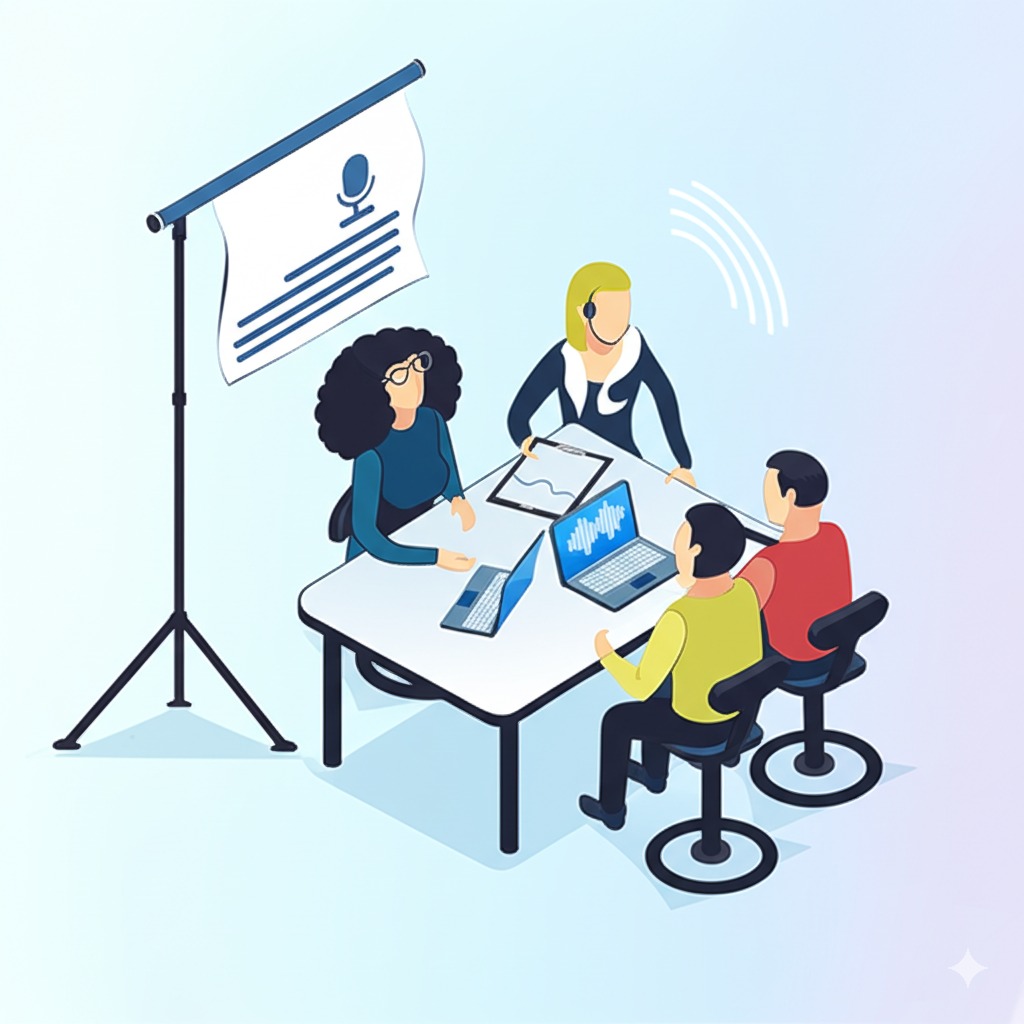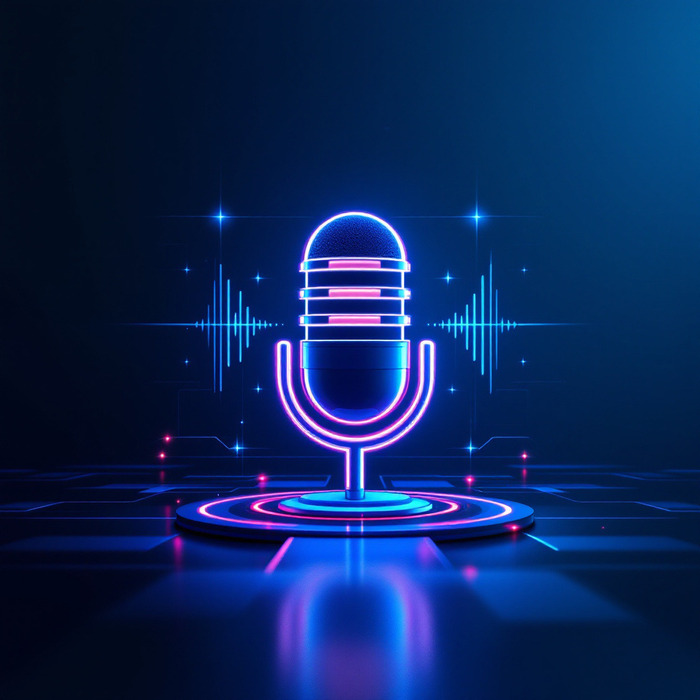
Voice cloning ethics means following clear rules when using technology that copies someone’s voice. To avoid deepfake misuse, you need to get proper permission, use technical protections like watermarking, follow laws for different countries, create company policies, train your team, and be open about when you’re using AI voices.
The best protection starts with never creating or using voice copies without clear consent from the original speaker. As voice cloning becomes more common and harder to detect, these protective steps are no longer optional – they’re essential for anyone working with this powerful technology.
AI voice technology has made huge progress in the last few years. Today’s systems can create voices that sound almost exactly like real people from just a short sample of their speech. This brings amazing opportunities for accessibility, entertainment, and business – but also serious risks if misused.

The Voice Cloning Revolution: Benefits and Risks in 2025
Voice cloning ethics has become a hot topic as this technology gets better every year. Voice cloning means using AI to create a digital copy of someone’s voice that can say new things they never actually said.
The good uses are pretty amazing:
- Helping people who’ve lost their voice due to illness
- Creating audiobooks in an author’s voice
- Making video games and movies with realistic voices
- Building more natural-sounding voice assistants
But there’s a dark side too. In 2025, deepfake voice prevention is a serious concern because these fake voices are being used for scams and tricks. Reports show voice fraud has gone up 350% since 2022, with scammers using cloned voices to trick people into sending money or sharing private information.
The technology that helps a person with ALS communicate again is the same technology that can be used to fake a call from your boss or family member. This is why we need clear rules about when and how to use these powerful tools.
Understanding Deepfake Voice Threats: A Risk Assessment Framework
Before you can protect against voice deepfakes, you need to understand the main ways they can cause harm:
- Financial Scams: Criminals create fake voice messages that sound like your boss, family member, or bank employee asking for money or passwords.
- Business Security Risks: Fake voices can trick employees into sharing company secrets or making unauthorized payments.
- Political Tricks: False recordings of politicians or public figures saying things they never said can spread misinformation.
- Personal Privacy Issues: Someone’s voice could be cloned and used to say embarrassing or harmful things that damage their reputation.
- New Threats: As the technology improves, scammers are finding new ways to use fake voices that security experts haven’t even thought of yet.
AI voice security measures need to address all these potential problems. The better you understand the risks, the better you can protect yourself and your organization.
Consent as the Foundation of Ethical Voice Cloning
The most basic rule in voice cloning ethics is simple: always get permission. Here’s what proper consent looks like:
- Clear Permission: Before recording or using someone’s voice, get their clear, informed permission in writing.
- Explain Everything: Tell them exactly how their voice will be used, for how long, and who will have access to it.
- Right to Withdraw: People should be able to take back their permission and have their voice data deleted.
- Special Rules for Famous Voices: Celebrity voices have extra legal protections in many places, so be extra careful.
A good voice cloning consent framework should include forms that clearly spell out:
- What the voice will be used for
- How long you’ll keep the voice data
- If the voice might be used for new purposes later
- How the person can request deletion of their voice data
Remember that using someone’s voice without permission isn’t just unethical – it can be illegal in many places.

Technical Safeguards Against Voice Deepfake Misuse
Beyond getting permission, there are technical tools to help with deepfake voice prevention:
- Voice Watermarking: This adds a hidden “signature” to AI-created voices that can be detected later, proving the audio was artificially created.
- Deepfake Detection Systems: Special AI tools can spot the small differences between real human voices and AI copies.
- Voice Verification: Adding extra security checks when voice is used for important things like banking or access to secure systems.
- Liveness Checks: Tests that verify a real person is speaking in real-time, not a recording or AI copy.
Voice synthesis watermarking is becoming a standard practice for ethical companies. It’s like adding an invisible tag to all AI-created voices that says “this was made by AI” – even if you can’t hear the difference.
AI-powered detection systems are also improving, learning to spot the tiny patterns that show a voice has been created or changed by AI.
International Regulatory Frameworks for Voice Technology
Different places have different rules about voice cloning ethics. If you’re working with voice technology, you need to know the laws where you operate:
North America
- The US has a patchwork of state laws. California’s CCPA gives people rights over their voice data as personal information.
- Canada treats voice data under PIPEDA privacy laws that require consent for collection and use.
European Union
- The GDPR treats voice recordings as personal data, requiring clear consent and giving people rights to access and delete their data.
- The new AI Act has specific rules for synthetic media, including voice cloning.
Asia-Pacific
- Japan has the Act on Protection of Personal Information covering voice data.
- China’s Personal Information Protection Law has strict rules on biometric data like voice.
- Australia’s Privacy Act applies to voice data collection and use.
Following voice deepfake regulations across different countries can be tricky. If you operate globally, you usually need to follow the strictest rules from all the countries where you do business.
Companies are pushing for more standard rules across countries to make compliance easier. Some industry groups are creating certification programs for ethical voice AI use, which might eventually become standard practice.
Building Organizational Safeguards: Policies and Procedures
To protect your organization from voice deepfake risks, you need more than just technical tools – you need clear rules and training:
- Create Clear Policies: Write down exactly how your company will and won’t use voice cloning technology.
- Train Your Team: Make sure everyone knows the risks of voice deepfakes and how to spot them.
- Technical Guidelines: Create step-by-step instructions for safely using voice technology.
- Ethics Review: Have a process to check if new voice projects are ethical before starting them.
- Response Plan: Know what to do if someone misuses voice technology or if your company becomes a target.
Building an ethical framework for AI voice applications isn’t just about avoiding trouble – it’s about being a responsible technology user. Clear policies help everyone make good decisions when using powerful tools.

Best Practices from Industry Leaders
Some companies are leading the way in voice cloning ethics. Here’s what they’re doing right:
Resemble AI
They built a system where every voice creation requires documented consent, and they check ID to verify the person giving permission is really who they claim to be.
ElevenLabs
They’ve created tools that mark all AI-generated audio with digital “fingerprints” so people can tell when audio has been artificially created.
Microsoft
Their responsible AI guidelines require clear disclosure when synthetic voices are used, and they limit certain high-risk uses of voice technology.
They’ve implemented biometric voice security and require human review of certain voice applications before they’re approved.
These companies show that ethical voice synthesis doesn’t have to slow down innovation – it just means innovating responsibly.
Balancing Innovation with Protection
The goal isn’t to stop using voice technology, but to use it safely. Here’s how to find that balance:
- Evaluate Each Use: Before starting a voice project, ask if it’s necessary and beneficial, not just technically possible.
- Risk Assessment: Identify what could go wrong and how serious the consequences would be.
- Right-Sized Security: Use stronger protections for higher-risk applications.
- Get Outside Input: Talk to ethics experts, legal advisors, and potential users before launching voice products.
- Keep Records: Document your decision-making process to show you considered ethical issues.
Voice identity protection works best when it’s built into your process from the start, not added as an afterthought.
Case Studies: Ethical Voice Implementation Success Stories
Respeecher + Cyberpunk 2077
Respeecher worked with the game Cyberpunk 2077 to recreate specific character voices, using strict permission protocols and technical safeguards to ensure the voice cloning was done ethically. Source: Respeecher Cyberpunk Case Study
Deepgram’s Fraud Detection in Finance
Deepgram created voice authentication systems that help banks spot fake voices during phone calls. Their system has prevented millions in fraud by detecting subtle signs of voice manipulation. Source: Deepgram Finance Case Study
Bev Standing + Respeecher
Voice actor Bev Standing partnered with Respeecher to create an authorized version of her voice that can be licensed for projects, giving her control over how her voice is used while allowing creators to work with her voice. Source: Bev Standing Case Study
Microsoft Responsible AI Framework
Microsoft has implemented ethical guidelines for all its voice synthesis technology, ensuring users know when they’re hearing an AI voice and requiring consent for voice cloning. Source: Microsoft Responsible AI
These cases show that voice cloning ethics can be successfully implemented in real businesses while still allowing for innovation.
Transparency Best Practices for Voice AI
Being open about AI voice use builds trust. Here’s how to be transparent:
- Always Disclose: Tell people when they’re hearing an AI-generated voice.
- Educate Users: Help people understand what voice synthesis is and how it works.
- Show the Markers: Make it easy for people to identify when audio has been artificially created.
- Keep Records: Track who created voice content and how it was made.
- Be Open About Your Process: Share how your company ensures ethical voice use.
Synthetic speech detection is important, but even better is simply being honest about when speech is synthetic in the first place.
The more open companies are about their use of AI for voice generation, the less likely people are to be fooled by malicious uses.

Future-Proofing Your Ethical Approach
Voice cloning ethics will keep evolving as the technology changes. Here’s how to stay ahead:
- Watch New Developments: Keep an eye on how voice technology is improving and what new risks emerge.
- Review Policies Regularly: Update your ethical guidelines at least once a year.
- Join Industry Groups: Participate in organizations working on ethical standards for voice AI.
- Think About Ethics Early: Include ethical questions from the very beginning of new voice projects.
- Keep Learning: Make improving your approach to audio deepfake detection an ongoing process.
The best protection against misuse is staying informed about both the technology and the ethical frameworks around it. What seems like enough protection today might not be tomorrow, so regular updates are essential.
As technology advances, voice identity protection methods will need to advance too.
FAQ Section
Is voice cloning legal, and what laws apply?
Voice cloning itself is legal in most places, but how you use it matters. Laws that apply include privacy laws (like GDPR in Europe), biometric data laws, fraud laws if used deceptively, and intellectual property laws protecting people’s voices (especially celebrities). The rules vary by country and even by state in the US.
What should be in a voice consent form?
A good voice consent form should include: what the voice will be used for, how long the data will be kept, whether the voice might be used for new purposes later, how the voice will be protected, and how the person can request deletion. It should use clear language anyone can understand.
How can organizations detect if their brand voice has been cloned without permission?
Companies can use voice deepfake detection for corporate security by setting up monitoring systems that scan for unauthorized use of voices associated with their brand. Some services now offer “voice brand protection” that works like trademark monitoring but for audio content.
How do voice biometrics differ from voice cloning technology?
Voice biometrics identifies unique patterns in a person’s voice as a security measure (like a voice password). Voice cloning copies a voice to create new speech. They’re opposite sides of the same technology – one verifies identity, while the other recreates voices.
What technical standards exist for ethical voice synthesis?
Several standards are emerging, including the IEEE 7010 standard for ethical AI, the NIST AI Risk Management Framework, and industry-specific guidelines from groups like the Partnership on AI. These standards cover things like consent requirements, necessary disclosures, and security measures.
How can consumers protect themselves from voice deepfake scams?
To protect yourself from voice scams: establish verification codes with family members for urgent requests, be suspicious of unexpected calls asking for money or information, verify requests through a different communication channel, use multi-factor authentication for sensitive accounts, and stay informed about common voice scam techniques.

Conclusion
Voice cloning ethics isn’t just about following rules – it’s about using powerful technology responsibly. As AI voices become more realistic, the line between real and fake gets harder to see. This makes ethical guidelines more important than ever.
The key to how to prevent unauthorized voice cloning misuse starts with getting proper permission, using technical protections, following relevant laws, and being transparent. These steps help ensure voice technology improves our world without creating new problems.
Legal compliance for brand voice cloning technology might seem complicated, but the basic principles are simple: respect people’s right to control their own voice, be honest about AI use, and put protections in place to prevent harm.
As voice technology continues to advance, our ethical frameworks need to keep pace. By working together – technology creators, users, and regulators – we can enjoy the benefits of these amazing tools while minimizing the risks.

